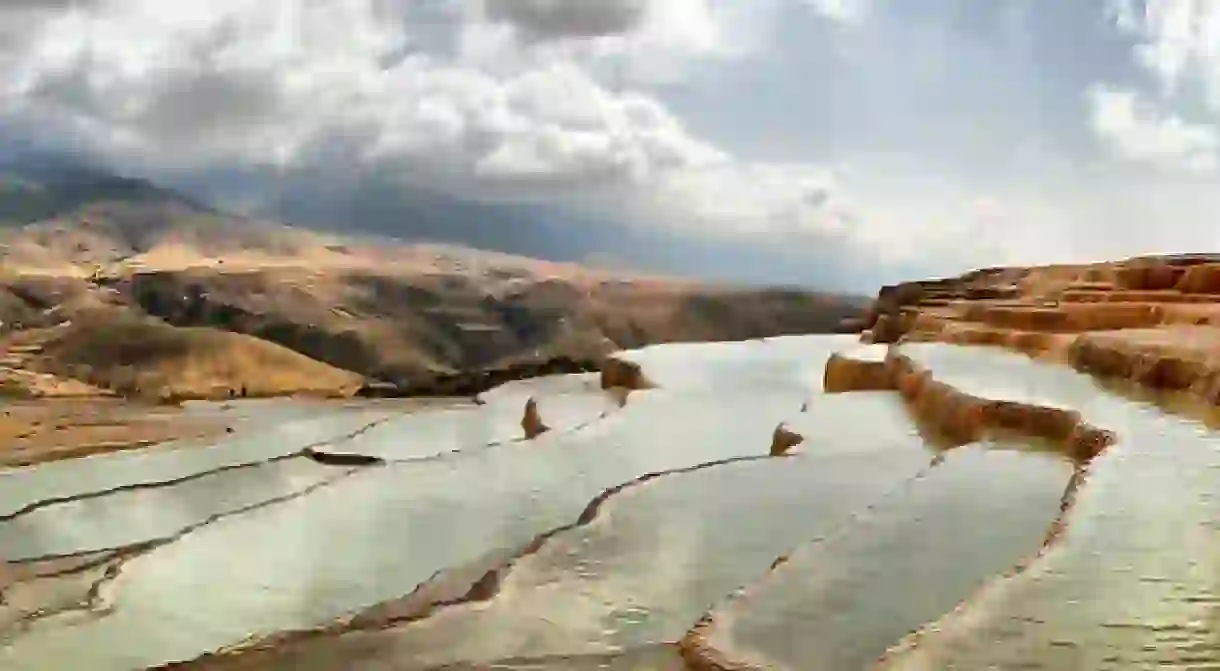Fall in Love With Badab-e Surt, Iran's Terraced Hot Springs

Iran is not only an ancient civilization with plenty of historical sites, but it also has an abundance of natural wonders. A perfect day trip from Tehran, this natural beauty lets you witness geological rock formations that glow in the sunlight and dazzle the eyes. Grab your camera and head to the colorful stone terrace of Badab-e Surt.
Geology enthusiasts will especially fall for Badab-e Surt. Located in the Mazandaran province, the name comes from a combination of bâd, gas, âb, water, and surt, the old name of the village of Orost located 7 kilometers to the west. Although there are a handful of similar places on earth, such as Mammoth Hot Spring in the U.S. and Pamukkale in Turkey, Badab-e Surt is unique due to its distinctive orange hue, resulting from a concentration of iron oxide.
This travertine terrace sits at 1,840 meters (6,040 feet) above sea level and is the culmination of thousands of years of limestone deposited by water flowing from two mineral hot springs, which are thought to have medicinal properties on account of their high mineral content. As water reaches the surface, carbon dioxide degasses, depositing mineral carbonate. Because the heavier minerals settle at the top of the steps, the water becomes clearer as it flows down, turning this site into a dreamy, sky-reflecting staircase of mirrors that shifts colors depending on the time of day the sunlight glistens upon it.

How to Get There
It may not be the most easily accessible site, but Bâdâb-e Surt is well worth the visit. About 370 kilometers from Tehran, two main routes from either Semnan or Mazandaran lead to this location. The Semnan route passes through Semnan city, towards Mahdishahr, Shahrmirzad, and Fulad Mahalleh before reaching Orost, the village after which the site is named. The more scenic of the two routes goes through Mazandaran and passes through Sari and the forests around Kiasar before arriving at Orost.













